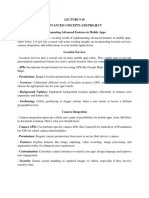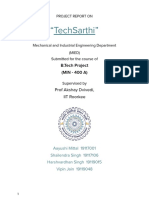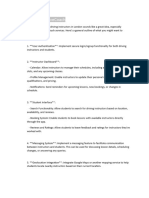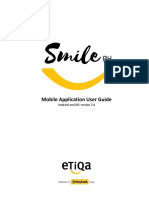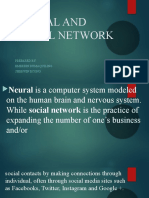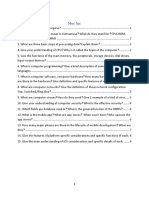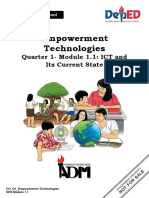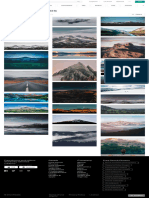Here’s a comprehensive list of technologies, libraries, frameworks, and languages used to build the
river flow study app:
Frontend (Mobile App)
1. Framework :
- React Native : For cross-platform development (iOS and Android).
2. UI Libraries :
- React Native Paper or Material-UI : For pre-built UI components that follow material design
principles.
- React Navigation : For handling navigation between screens.
3. Data Visualization :
- D3.js : For complex and custom data visualizations (charts, graphs, etc.).
- Chart.js : For simpler, responsive graphs and charts.
- Leaflet.js : For displaying map-based visualizations and geolocation data.
4. Form Handling and Validation :
- Formik : For form management.
- Yup : For form validation and handling errors during data entry.
5. State Management :
- Redux or React Context API : For managing app-wide state (user data, test results).
6. Geolocation :
- React Native Geolocation : For capturing the location of the river tests.
Backend
1. Framework :
- Node.js with Express.js : For building the backend API and server-side logic.
2. Authentication :
- Firebase Authentication : For handling user registration and login (OAuth 2.0 or email/password).
- JSON Web Tokens (JWT) : For secure session management and authentication.
3. Database :
- PostgreSQL : For relational data storage (user profiles, test results, metadata).
- Firebase Realtime Database or Firestore : For real-time data synchronization (notifications, live
updates).
4. API Development :
- Express.js : To create RESTful APIs for communication between the app and the backend.
5. Data Encryption and Security :
- SSL/TLS : For encrypting data in transit.
- bcrypt.js : For hashing user passwords.
6. Cloud Hosting and Storage :
- AWS (Amazon Web Services) or Google Cloud Platform : For deploying the backend and database.
- S3 (AWS) or Google Cloud Storage : For storing media files like photos uploaded by students.
Testing and Debugging
1. Unit Testing :
- Jest : For unit testing the React Native app.
- Mocha/Chai : For testing the backend API.
2. Integration Testing :
� - Supertest : For testing API endpoints.
3. Error Monitoring :
- Sentry : For real-time error tracking and debugging.
Deployment and CI/CD
1. CI/CD Tools :
- GitHub Actions or Jenkins : For automating testing, building, and deploying the app.
2. App Store Deployment :
- Apple App Store Connect : For iOS app submission and distribution.
- Google Play Console : For Android app submission and distribution.
Other Tools
1. Version Control :
- Git with GitHub : For source code management and collaboration.
2. Prototyping and Design :
- Figma or Adobe XD : For creating wireframes and UI/UX design prototypes.
Languages
1. JavaScript : Primary language for both React Native frontend and Node.js backend.
2. TypeScript (optional): For adding type safety and improving code quality.
3. SQL : For writing database queries in PostgreSQL.
This tech stack ensures the app is scalable, user-friendly, and maintainable while enabling real-time
data visualization and secure data handling.
- Continuous Integration and Deployment
- Continuous Integration (CI) : Implement tools like GitHub Actions or Jenkins to automate the
integration of code changes into a shared repository. This ensures early detection of integration
issues and maintains code quality.
- Continuous Deployment (CD) : Utilize CI/CD pipelines to automate the deployment process,
enabling frequent releases of new features or updates to the river flow study app.
- Performance Optimization
- Code Splitting : Employ techniques like code splitting to optimize the app's performance by
loading only the necessary code for each page, reducing initial load times.
- Image Optimization : Compress and optimize images to enhance app speed and reduce
bandwidth consumption, especially for mobile users.
- Accessibility and Inclusivity
- Screen Reader Compatibility : Ensure the app is accessible to users with visual impairments by
implementing features that work well with screen readers and assistive technologies.
- Color Contrast and Text Size : Adhere to accessibility standards by maintaining sufficient color
contrast and offering adjustable text sizes for users with varying visual needs.
- User Feedback and Analytics
- Feedback Mechanisms : Incorporate feedback forms or surveys within the app to gather user
opinions and improve the overall user experience based on their suggestions.
- Analytics Integration : Integrate analytics tools such as Google Analytics or Firebase Analytics to
track user interactions, identify popular features, and make data-driven decisions for app
enhancements.








